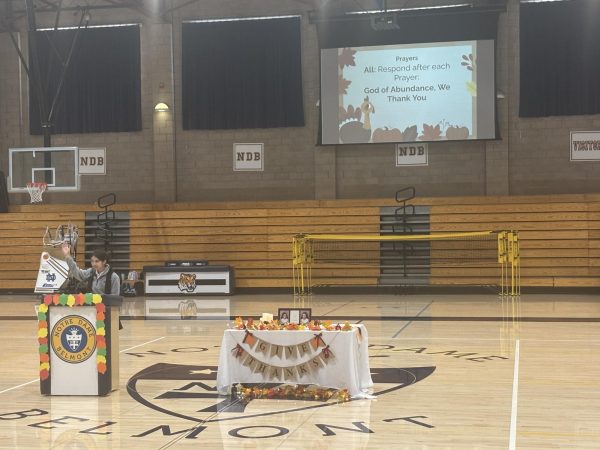Women rights through the decades
A century ago, women had only just earned the right to vote. A century ago, women were not allowed to enter the military, have their own credit card, file for divorce, keep their maiden name, own property when married, have their own passport and countless other rights that many take for granted today. Women’s rights have come a long way in the last 100 years, yet progress has never been easy. Revolutionary global movements have made change possible, but brave women are responsible for shifting the mindset of the world and creating change in the fight against gender discrimination.
The 1920’s were known as the era of the “new woman”. The most influential change that came this decade was the passing of the 19th Amendment, which granted women the right to vote. The suffrage movement, led by the National American Woman Suffrage Association, was a powerful organization which helped bring about change. It is important to note, however, that equality was not consistent even within activist organizations. Black women were not allowed to conventions and were often excluded from activist organizations, even though they were at the forefront of the movement. Political gender equality took a great leap as women began to cast ballots for representatives who influenced their daily lives. Jazz music and the concept of a flapper girl had strong effects on social expectations for women. With bobbed hair, short dresses and cigarettes, the flapper girl was and still is a symbol of women’s autonomy and freedom.
The next decade saw the continuance of the trends and progress that began in the 1920’s. Amelia Earhart made her solo flight across the Atlantic in 1932. Her style and occupation was a source of inspiration for women of the 30’s. In the late 20’s, nearly a quarter of American women had a paid job. That number dropped in the 30’s with the Great Depression. Still, new technology offered jobs in television and radio. Another influential figure was First Lady Eleanor Roosevelt, who assisted her husband, President Franklin D. Roosevelt and took a front seat in policy negotiation and activism. In 1937, the Supreme Court case West Coast Hotel Co. versus Elsie Parrish resulted in a decision that allowed a minimum wage for women. That same year, married women were allowed to hold their own passports.
With the 1940’s came the second world war. With many men fighting in Europe, more jobs became available for women in the United States. The famous “Rosie the Riveter” signs were distributed to encourage female participation in the war. Seven million women joined the workforce for the first time, in both industrial jobs and in aiding the military efforts. Although jobs were abundant, money was not, and most women were paid less than half of what a man earned for the same job. Most new jobs came with the reminder to women that their position would last only until the war ended. By the end of the decade and end of the war, women were allowed to be permanent members of the military.
After the war, the 1950’s brought a halt in the movement towards women’s rights. When men returned from the war, many women who had paying jobs were pushed back into the home and resumed the role of mother and homemaker. It became socially unacceptable to choose a career and college education over raising a family. Women still had a powerful role as consumers though, and many companies marketed products to appeal to the typical housewife. Entertainment was becoming increasingly important, and Marilyn Monroe became an icon, and even opened her own production company. Rosa Parks refused to give up her seat in 1955 and became influential in both the women’s rights movements and the civil rights movement.
The ‘second wave’ of feminism began in the 60’s, when woman fought for reproductive rights, equal pay, and an end to domestic violence. Equal pay laws were passed in 1963, but did not completely solve the problem. Women continued to break into fields traditionally dominated by men. Oprah Winfrey, Madeleine Albright, and Ruth Bader Ginsburg were at the forefront of the movement, and set an example of women in top leadership roles for the younger generations.
The efforts that began in the 60’s saw fruition in the 70’s, when women were allowed to have separate credit cards, keep their maiden name, and gain equal access to education. The “Ms.” magazine began in 1972, and promoted women’s rights and feminism. Roe Versus Wade gave more women access to abortion.
In the 80’s the Supreme Court case Meritor Savings Bank v. Vinson found that sexual harassment is a type of workplace discrimination. EMILY’s List, an organization to help pro-choice woman get elected to office was founded and increased the number of woman in congress, and all across the political stage.
In the last decade of the century, the The Violence Against Women Act was passed, which offered money and support to victims of domestic violence, and increased the federal punishment for perpetrators. The “Girl Power” movement spread the idea and support of feminism. 1992 was dubbed “The Year of The Women” due to the dramatic increase of women in the Senate.
With the creation of the internet, the concept of feminism continued to spread, and much more rapidly. The phrase “Me Too” was first used as a women’s rights slogan in 2006 and the movement began. #MeToo focuses on anti-sexual harrassment, and although it began in the early 2000’s it has become a larger movement just in the past five years as more and more women have come forward.
There is no doubt that women’s rights have come a long way. Just look at the fact that more women attend US colleges and universities than men. Still, there is a long way to go. Only in the last year did the US National Women’s Soccer Team reach a settlement after they filed a lawsuit for unequal pay. New anti-abortion laws in many states mean that the reproductive rights fight for women has taken a step backward. Throughout the US, internal and external biases are still being called out by women brave enough to challenge them. This Women’s History Month, remember those women, and let them inspire you to continue the fight.

Clair Sapilewski is the Managing Editor and is in Journalism II this year. This is her third year writing articles for The NDB Catalyst.
She...





